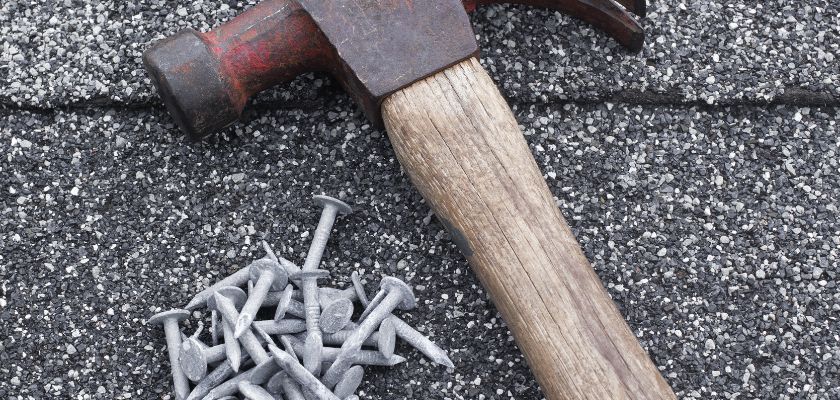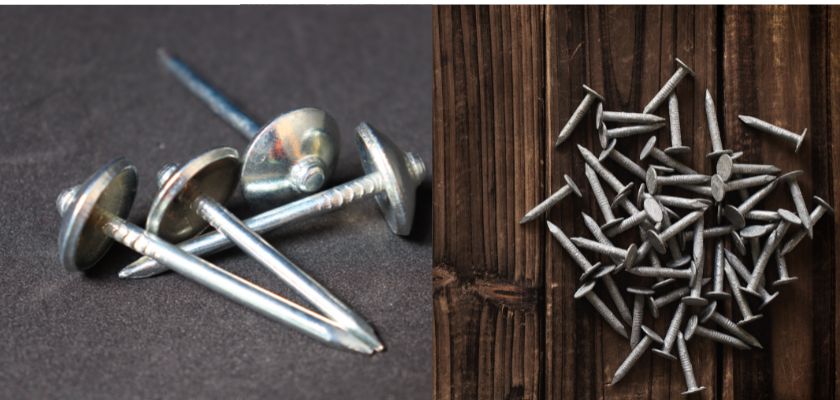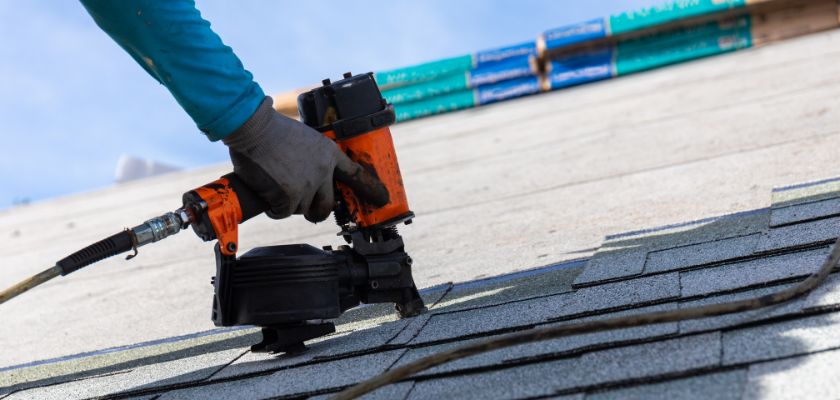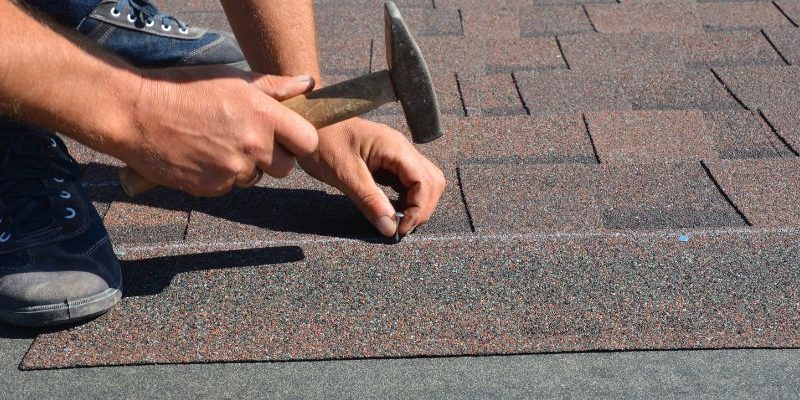Roofing nails are an essential component in any roofing project. Choosing the right type of nail is crucial for ensuring the longevity and stability of your roof. This comprehensive guide will explore the different types of roofing nails, their uses, and how to select the best ones for your specific needs. Whether you’re dealing with top 5 roofing materials or undertaking a roofing repair and replacement project, understanding the various roofing nails is key to a successful outcome.
Understanding Roofing Nails

Before delving into specific types of roofing nails, it’s important to understand their general purpose and significance in roofing projects.
The Role of Roofing Nails
- Securing Materials: Roofing nails are primarily used to secure shingles, underlayment, and other roofing materials to the roof deck.
- Providing Stability: Properly chosen and installed roofing nails ensure the stability of the roof, preventing materials from shifting or blowing off in high winds.
- Longevity: Using the right type of roofing nail can significantly extend the lifespan of your roof by preventing leaks and structural damage.
Common Features of Roofing Nails
- Material: Roofing nails are typically made from materials like galvanized steel, stainless steel, or copper to resist rust and corrosion.
- Length: The length of roofing nails varies depending on the materials being secured and the thickness of the roofing layers.
- Head Shape: Roofing nails usually have a wide, flat head to prevent the nail from pulling through the roofing material.
Types of Roofing Nails

Understanding the different types of roofing nails and their specific uses will help you choose the best option for your project.
Galvanized Roofing Nails
- Description: Galvanized nails are coated with a layer of zinc to protect against rust and corrosion. They are one of the most commonly used roofing nails.
- Uses: Ideal for general roofing tasks, including securing asphalt shingles and metal roofing.
- Advantages: Cost-effective, widely available, and suitable for a variety of climates.
Stainless Steel Roofing Nails
- Description: Made from a combination of steel and chromium, stainless steel nails offer superior resistance to rust and corrosion.
- Uses: Best for coastal areas, high-humidity environments, and roofs with slate or tile shingles.
- Advantages: Highly durable, long-lasting, and require minimal maintenance.
Copper Roofing Nails
- Description: Copper nails are known for their excellent corrosion resistance and aesthetic appeal.
- Uses: Commonly used for copper roofing, flashing, and other metal roofing applications.
- Advantages: Attractive appearance, excellent corrosion resistance, and ideal for specialty roofing projects.
Aluminum Roofing Nails
- Description: Lightweight and resistant to rust, aluminum nails are another popular choice for roofing projects.
- Uses: Suitable for securing metal roofing and siding.
- Advantages: Lightweight, rust-resistant, and easy to work with.
Asphalt Roofing Nails
- Description: Specifically designed for securing asphalt shingles, these nails often have a larger diameter and thicker shank.
- Uses: Best for asphalt shingle installation.
- Advantages: Provides a strong hold, designed to withstand high winds, and prevents shingle blow-off.
Uses of Roofing Nails

Different roofing nails are designed for specific uses, and understanding these can help you choose the right nail for your project.
Shingle Installation
- Galvanized and Asphalt Nails: These are commonly used for shingle installation due to their strong hold and resistance to rust.
- Importance: Using the correct nails ensures that shingles remain securely fastened, preventing leaks and wind damage.
Roof Flashing
- Copper and Stainless Steel Nails: Ideal for securing roof flashing due to their durability and corrosion resistance.
- Importance: Properly secured flashing prevents water from penetrating the roof at joints and intersections, reducing the risk of leaks.
Underlayment Attachment
- Galvanized and Aluminum Nails: These are typically used to secure underlayment materials, providing an additional layer of protection against moisture.
- Importance: Ensuring that underlayment is securely fastened helps protect the roof deck from water damage.
Choosing the Right Roofing Nails
Selecting the right roofing nails involves considering several factors, including the type of roofing materials, environmental conditions, and specific project requirements.
Assessing Roofing Materials
- Compatibility: Ensure that the nails you choose are compatible with the roofing materials you are using. For example, copper nails are best for copper roofing.
- Top 5 Roofing Materials: Consider the specific requirements of the top 5 roofing materials, such as asphalt shingles, metal roofing, slate, tile, and wood shakes.
Environmental Considerations
- Climate: Choose nails that can withstand the environmental conditions of your area. Stainless steel nails are ideal for coastal regions, while galvanized nails work well in moderate climates.
- Exposure: Consider the level of exposure to elements like moisture, salt, and chemicals. For high-exposure areas, opt for nails with superior corrosion resistance.
Project Requirements
- Type of Project: Determine whether the project involves new installation, roofing repair and replacement, or specialty roofing. This will guide your choice of nails.
- Budget: Balance the cost of nails with their durability and long-term value. While stainless steel nails are more expensive, their longevity can offer better value in the long run.
Final Wording
Understanding the different types of roofing nails and their uses is essential for ensuring the success of your roofing project. By selecting the right nails for your specific needs, whether for top 5 roofing materials or a roofing repair and replacement job, you can enhance the durability and longevity of your roof. Galvanized nails offer a cost-effective solution for general roofing tasks, while stainless steel nails provide superior resistance to rust and corrosion for more demanding environments. Copper and aluminum nails offer specialized benefits for particular roofing applications. By carefully assessing your materials, environmental conditions, and project requirements, you can make an informed decision that ensures a secure and lasting roofing system.
FAQ’s
What are the main differences between galvanized and stainless steel roofing nails?
Galvanized roofing nails are coated with zinc to protect against rust and corrosion, making them cost-effective and suitable for general roofing tasks. Stainless steel roofing nails, made from steel and chromium, offer superior corrosion resistance and durability, ideal for coastal and high-humidity environments.
When should I use copper roofing nails?
Copper roofing nails are best used for copper roofing, flashing, and other metal roofing applications. They provide excellent corrosion resistance and an attractive appearance, making them ideal for specialty roofing projects that require both durability and aesthetic appeal.
Are aluminum roofing nails suitable for all roofing materials?
Aluminum roofing nails are lightweight and rust-resistant, making them a good choice for securing metal roofing and siding. However, they may not provide the necessary strength for heavier materials like slate or tile, where stainless steel or copper nails would be more appropriate.
What type of roofing nails should I use for asphalt shingles?
Asphalt roofing nails, often made from galvanized steel, are specifically designed for securing asphalt shingles. They typically have a larger diameter and thicker shank to provide a strong hold and withstand high winds, preventing shingle blow-off and ensuring a secure installation.
How do I choose the right roofing nails for my climate?
For moderate climates, galvanized nails are a cost-effective and suitable option. In coastal or high-humidity areas, stainless steel nails are recommended due to their superior corrosion resistance. Assessing the specific environmental conditions of your location will help you choose the best nails for long-term durability.







